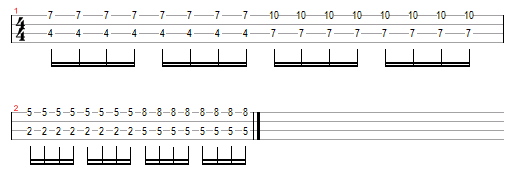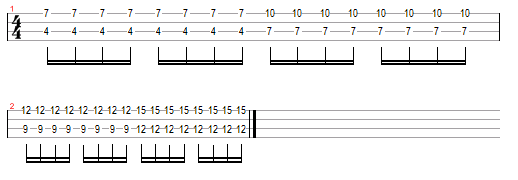OK Go – This Too Shall Pass (Chords)
I used to think this the was the best ukulele blog, but now I’m pretty sure it’s Ralph Shaw’s The Ukulele Entertainer. He’s full of great advice. And he’s one of the few people who agree with me that kids should be discouraged from making music. Two recent articles are essential reading for all ukers: Silence in Music and Make your Ukulele into a Pianoforte.
It’s must-read stuff for everyone, but particularly relevant for ukulele groups. It’s dispiriting to watch a group of ukers all playing the same chords in the same inversions with the same strum at the same volume for the whole song. If you’re just playing for shits and giggles, no problem. But if you’re playing in front of people, you need to put some thought into the arrangement.
And that doesn’t mean you need a band full of flash players. James Hill’s ukulele big band arrangements consist of each person playing one note at a time. And Will from UOGB only plays one note through most of Miserlou.
This Too Shall Pass would be an excellent tune for a ukulele group to play. The chords are dead simple, it’s one big singalong, there are some twiddly bits for the show offs, plenty of dynamic changes in the arrangement and plenty of room for ideas.
Suggested Strumming
When you are strumming you can use
d – d – d u d u
But the most important part of the strumming pattern is when you stop strumming. Make sure you’re not playing during the plinky bits and the, “Let it go…”
Twiddly Bits
The most obvious dip in the dynamics is this little bit that comes in the verse.
I like to play it further up the neck for extra plinkiness (let me know in the comments if you need these technical terms explained).
These notes are also used in the middle section but each two note pair lasts for twice as many beats.
And here’s the little xylophone bit that crops up in the verse:
It’s a little tricky to fit all those G notes in – even using two strings – so you can drop a few notes to make it easier.
There are tons of ideas for extra bits of filigree for you to add as the arrangement builds towards the end in the vastly superior but unembeddable marching band version. You can use any notes you feel like in the C major scale or, simpler still, pick notes from the chord that’s playing at the time.
A great way to keep strumming and add some colour is to use octaves like this:
All these notes come directly from the chord.
And so do these:









Sorry, Comments Are Broken Right Now